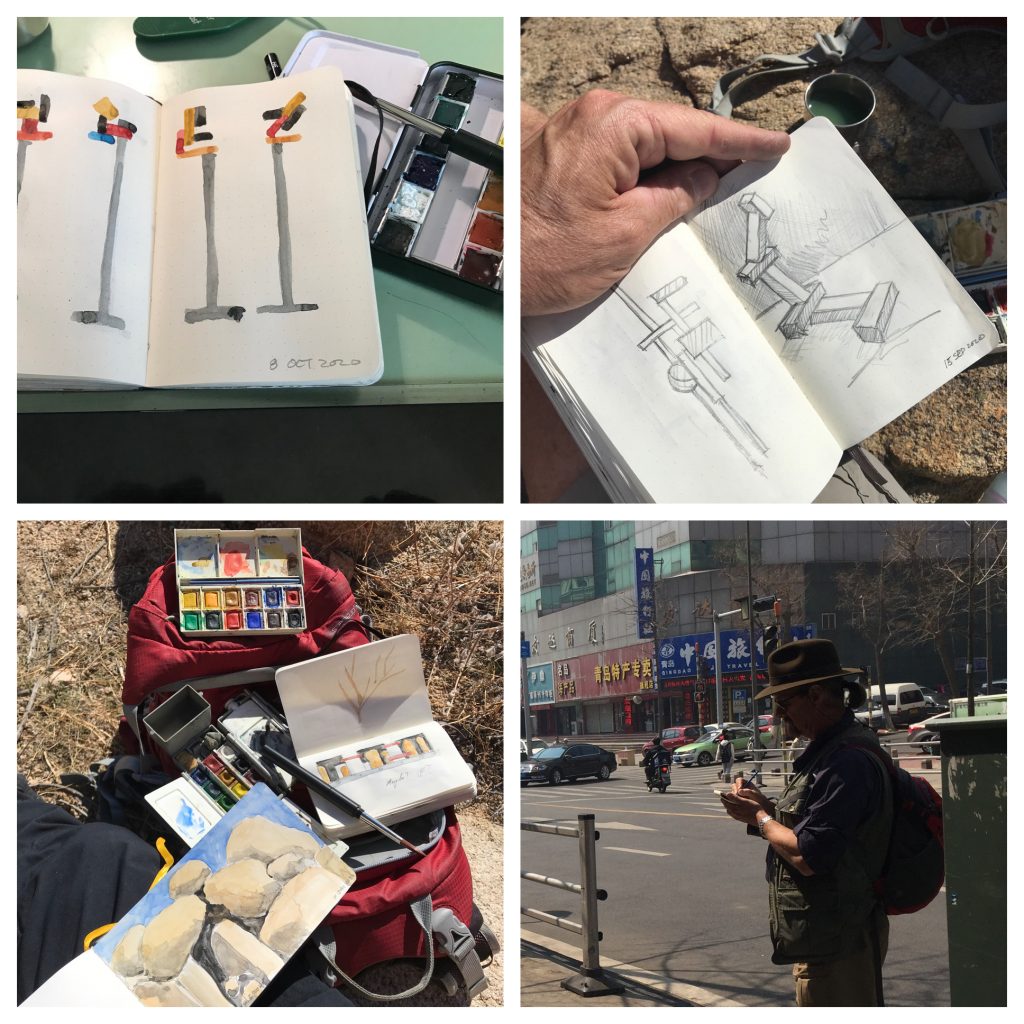Drawing
James Jared Taylor | November 20, 2020
Drawing
12 November 2020
Drawing is all about practice. Most of my work is drawing and I am continually challenged by it. Sometimes certain drawings are easy but others are more difficult. Of course, that always centers on what the purpose of the drawing is. I have had all types of experiences as a draughtsman including technical drafting. I have had hours of observational drawing including figure drawing while I was in college and graduate school. From time to time, I still engage in observational drawing.
I am pretty impulsive when it comes to drawing. Whenever there is a dull moment, I may start marking on a surface. That was especially true when I was teaching and in long department chair meetings. Any surface will do- a sketchbook, a napkin, or my iPad. But some how the challenge is always there.
Observational drawing always keeps my eye sharp, although I don’t think that I do it enough. One area of observational drawing is rendering the human form from life which is extremely difficult for me. Perhaps, I need to go back to some figure drawing just for exercise since I have not done any live figure drawing for over twenty years. I was doing basic figure drawing with my students but those drawings were just “demonstration models.” Currently, my observational drawings consist of watercolors of landscapes in a small Moleskine sketchbook from weekly hiking excursions with my wife. We hike for about an hour, pick a spot, paint and draw together, eat lunch, and then hike back to the car- it is mostly about being in nature rather than having a specific time and place to draw. When there is time, I like to draw objects (aka still lives) and architecture. I have a special sketchbook that I use for drawing architecture and it contains drawings from France, Spain, Italy, Portugal, and China. There is an old Christian Church in Qingdao China that I spent some time drawing while the students I was chaperoning were shopping for souvenirs.
Most of my drawings (and I will toss in watercolors, too) are for developing ideas for sculptures and paintings. On our hikes, I take another small sketchbook for drawings and watercolors to work out ideas. Being in nature is always calming and it is a great place to draw- anything. After I create a small watercolor of the landscape, I take out the other sketchbook and develop some drawings in wet and dry media for a painting or sculpture.
I have dozens of sketchbooks in plastic storage containers going back to 1975 when I was in high school. Eighty percent of the drawings in those sketchbooks are sketches for “final” works.
I recently watched a video of a critic/writer discussing the paintings of Stanley Lewis. He said that Lewis’ works are “questions rather than answers.” I think that applies to my drawing. I would know this because Stanley Lewis was one of my professors at the Kansas City Art Institute. When I am drawing I am simply asking questions- “What if it looked this way?” “Where to next?” “How is it going to be done?” “What does it really mean?”
In the end, I just have stacks of drawings and sketches spanning forty five years. When I am cleaning and organizing, I occasionally look at “history” and open those plastic containers. Drawings are actual history. I have so many ideas that were put down on paper (and now, occasionally, on my iPad). There are times when I could not be in my studio making paintings or sculptures. Sometimes, I could not work in the studio for extended periods because I was teaching, traveling, or taking care of life’s priorities. However, those sketchbooks are what kept me going. I have a huge warehouse of ideas that I can see to fruition. I would always tell my students, “always have a sketchbook because you never know when that idea strikes you.” Drawings and sketches are my history but when I get into the studio, 99% of the work is done- all I need to do is weld, bend, grind, prime, apply colors, paint on a canvas or a piece of wood, etc. and not sit around thinking about what I should do. . . Now that I have retired from teaching, those drawings are a rich repository for me even though the final artwork, many times, does not look exactly like the idea I drew on paper. . .
